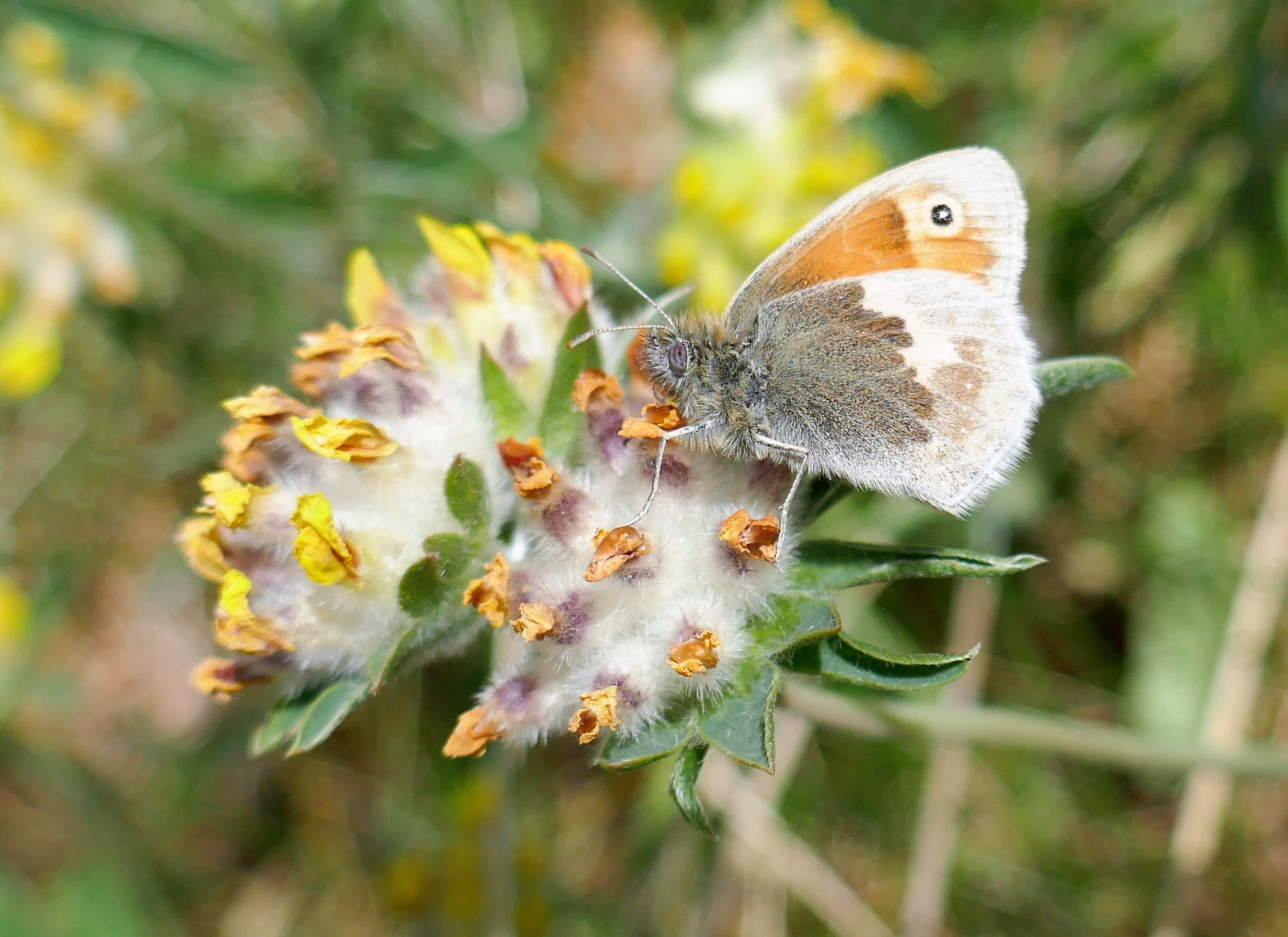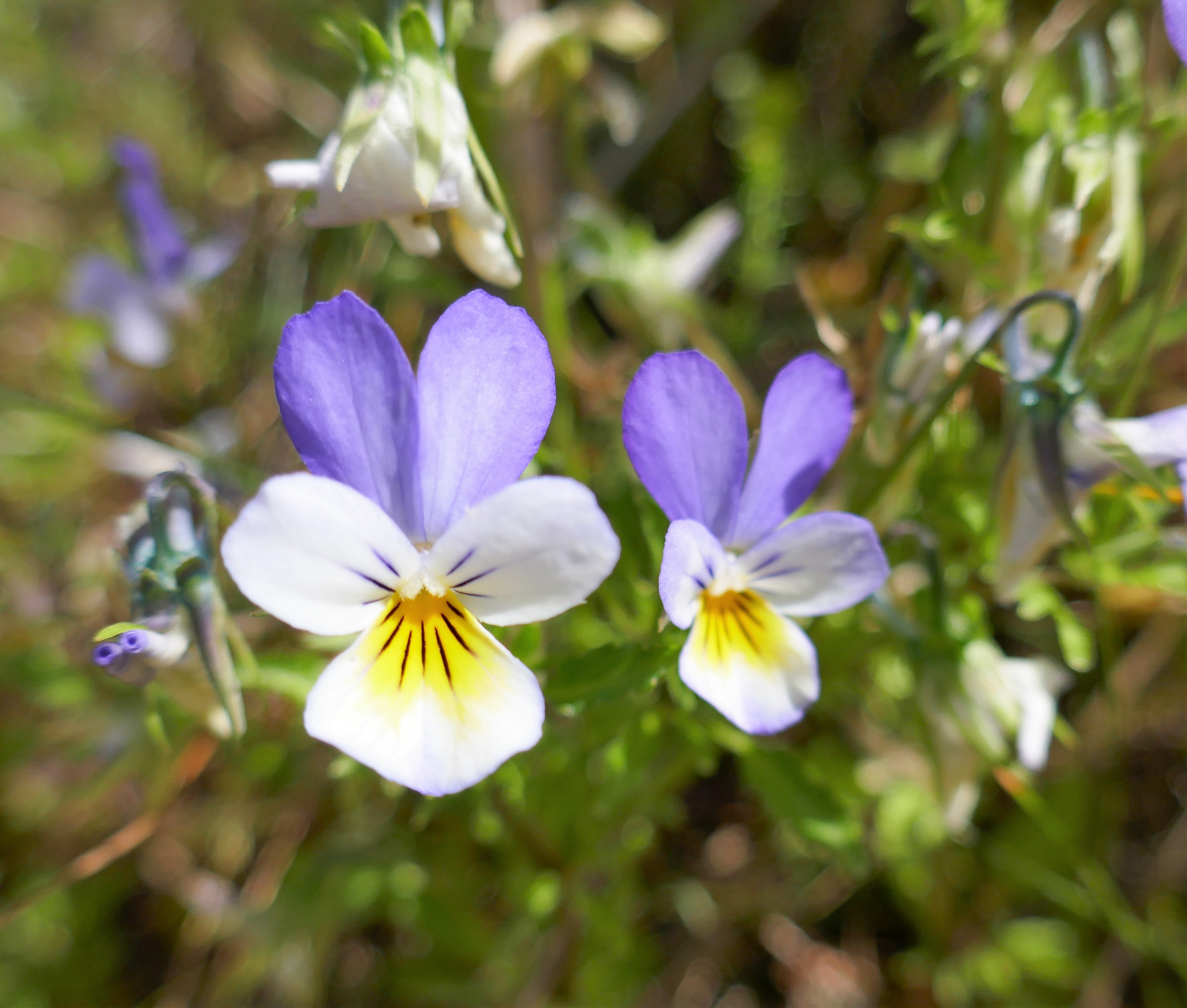The day was hazily sunny before noon, but soon after midday the clouds faded and the sun shone on our day. The Mornington dunes are part of the Boyne Coast Special Area of Conservation for three sand dune types-embryonic shifting dunes, shifting dunes along the shoreline with Marram, and fixed dunes with herbaceous vegetation. Kidney Vetch. the flowering plant needed by the endangered Small Blue can be found on all three dune types, especially the latter two. The fixed dunes are particularly rich in flora with Bee Orchid (scarce this year), Pyramidal Orchid, Common Cat’s-ear, Wild Thyme, Wild Pansy, Common Ragwort, Kidney Vetch, Common Bird’s-foot-trefoil, and Red Fescue all abundant.
We were particularly looking for the Small Blue (very well-named for its size!) and the showing did not disappoint. The butterfly was everywhere we looked, from the newest to the most established high dunes backing onto the golf course. At times half a dozen could be seen jinking at the crest of a dunes-males checking the breeze and passing butterflies for a female. Females were observed laying eggs and rejecting plants, presumably because these already held an egg. Many of the butterflies looked fresh, although worn specimens were readily seen.
Skylarks and Meadow Pipits were vocal, adding to the wild atmosphere. Initially few Small Heaths were found but as it warmed these appeared in good numbers, with areas of matted fescue being favoured. Here, at least, this declining butterfly remains numerous. Meadow Browns, all new males, were extremely elusive and wild. These have not yet settled into their typical behaviour of searching patiently for females.
Because the dunes we reached from the car park were so productive, we did not venture too far but took the time to observe and tried to photograph the highly skittish Small Blues. The males have the annoying habit of resting with wings extended but darting off at the sight of another butterfly, leaving the photographer with a blurred photo or a photo of an unoccupied grass blade. However, the challenge of getting that perfect photograph is part of the enjoyment.
While pursuing butterflies to obtain photographs might be seen as a one-dimensional approach to nature study, I disagree. Much can be learned from an image. The butterfly’s orientation, stance, activity, choice of perch, the time the image was taken can tell us much about the creature’s ecology-don’t knock photography.
There was one fly in the day’s ointment. We received news of a proposal to construct a cycleway through the dunes which will enable cyclists to travel from Laytown to Drogheda. This is a disturbing idea. The dunes represent the best flower-rich habitat in County Meath and are protected under EU and Irish law. They also hold possibly the highest population of the endangered Small Blue butterfly in Ireland. The mania for cycleways should not destroy natural habitats. If there must be such an amenity, build it on the adjacent golf course.
Leave the dunes to nature. They are perfect as they are.







Thanks to everyone who came along. Your company made the day a great pleasure.

